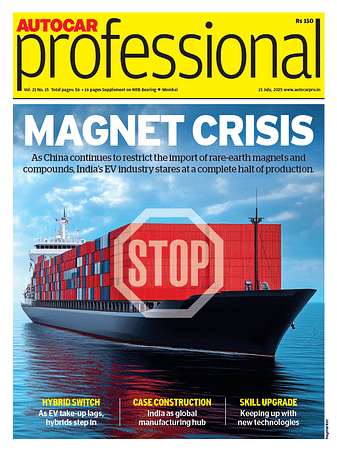Yokohama Rubber Develops First Theoretical Model to Predict Tire Wear
The model addresses the complex challenge of predicting wear behavior on multiscale surfaces, ranging from nanometer to centimeter levels.
Yokohama Rubber Co., Ltd. and rubber friction expert Dr. Bo Nils Johan Persson have developed the world's first theoretical model that can predict rubber wear rates on uneven road surfaces and the size distribution of wear particles. The research, completed in December 2024, was featured as the cover story in the February 21, 2025 edition of The Journal of Chemical Physics.
The model addresses the complex challenge of predicting wear behavior on multiscale surfaces, ranging from nanometer to centimeter levels. Testing in both dry and wet conditions across various contact pressures and sliding speeds demonstrated that the model's predictions closely matched experimental results for wear rates and particle size distribution.
Dr. Persson, who works at the Peter Grünberg Institute in Germany and Lanzhou Institute of Chemical Physics in China, brings extensive expertise in contact mechanics, friction, wear, and lubrication. Through his company Multiscale Consulting, he has supported numerous firms in the rubber industry, with his approach validated through peer-reviewed research.
The development comes at a crucial time as tire wear particles increasingly become an environmental concern, particularly with the rising adoption of heavier electric vehicles. Yokohama Rubber plans to continue its collaboration with Dr. Persson and Multiscale Consulting to develop tires with enhanced wear resistance.
The research aligns with Yokohama Rubber's current medium-term management plan, Yokohama Transformation 2026, which emphasizes efficient product development and technological innovation. The company has been strengthening its research capabilities through AI implementation and partnerships with academic institutions and industry organizations.
Tire wear prediction has long been a challenge for the automotive industry, with manufacturers relying primarily on physical testing and empirical data. This theoretical model represents a significant advancement in understanding and predicting tire wear behavior, potentially leading to more sustainable tire development and reduced environmental impact.
RELATED ARTICLES
SIAM Conclave Explores Sustainable Strategies for Automotive Logistics
Stakeholders discuss multimodal transport, digital innovation, and sustainable practices to improve efficiency and resil...
Varroc Appoints Padmanabh Sinha as Independent Director
Sinha returns to Varroc’s Board with over 25 years of investment experience across private equity and technology.
Railways To Introduce More Specialized Wagons For Vehicle Transportation: Hitendra Malhotra
Hitendra Malhotra, a member of the Railway Board for Operations & Business Development at the Ministry of Railways noted...





 By Angitha Suresh
By Angitha Suresh
 24 Feb 2025
24 Feb 2025
 2492 Views
2492 Views




 Sarthak Mahajan
Sarthak Mahajan


 Shruti Shiraguppi
Shruti Shiraguppi

 Kiran Murali
Kiran Murali

